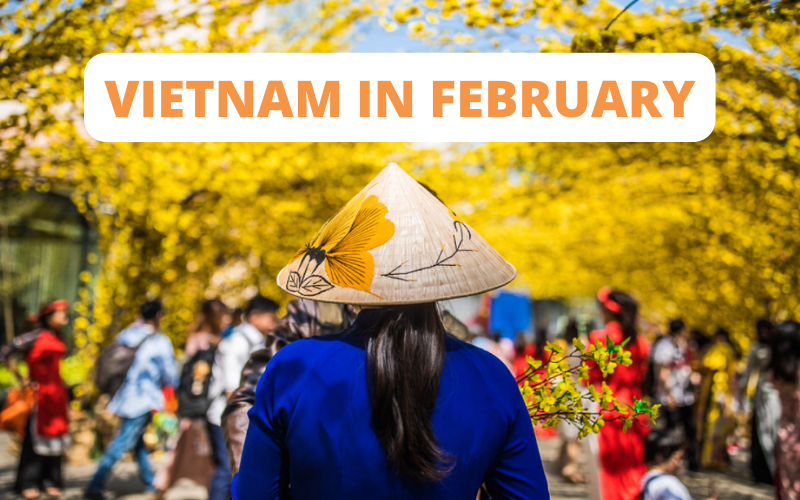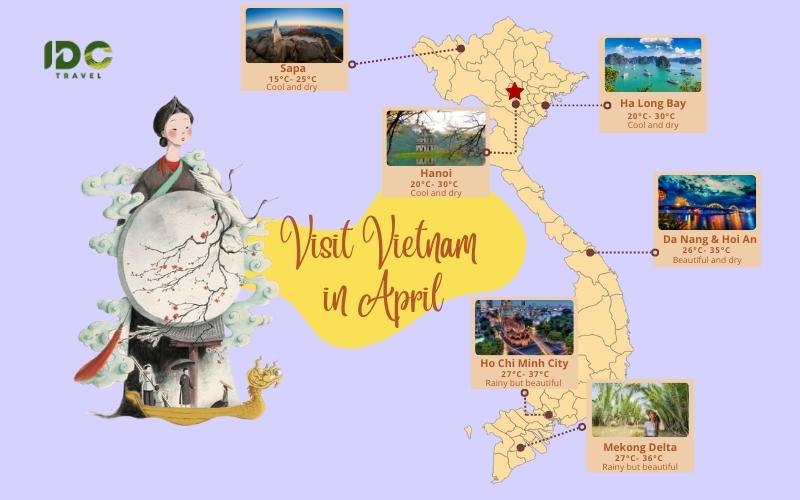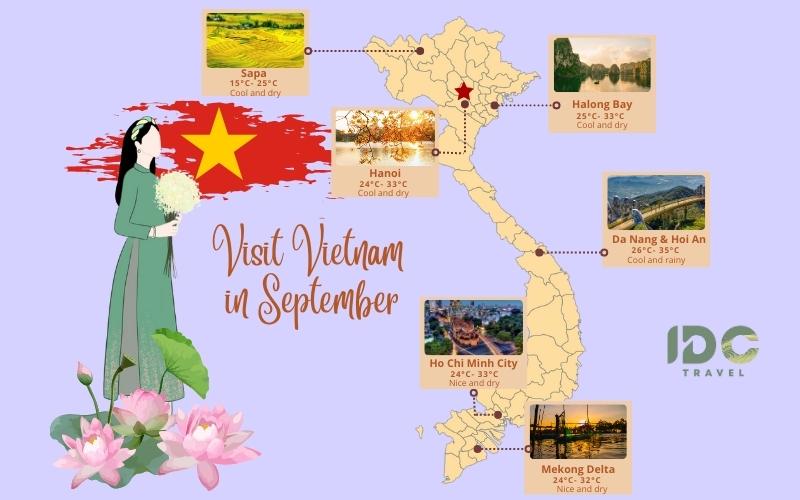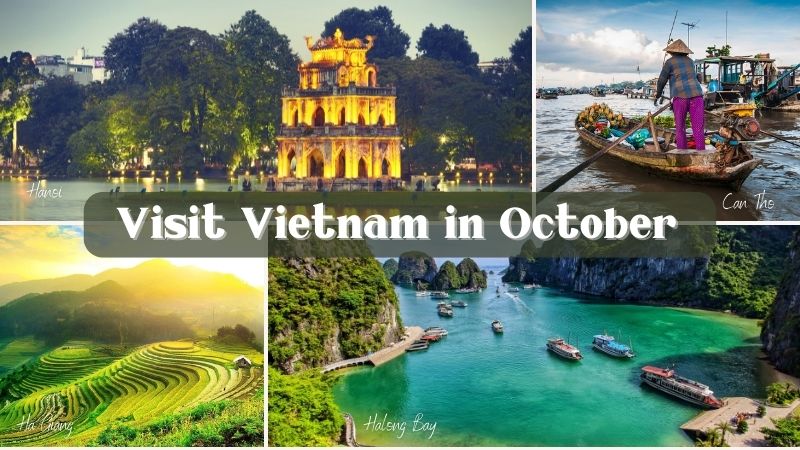Vietnam, situated in Southeast Asia, experiences a diverse climate that varies by region and season, primarily influenced by monsoons that usher in distinct weather patterns across the country.
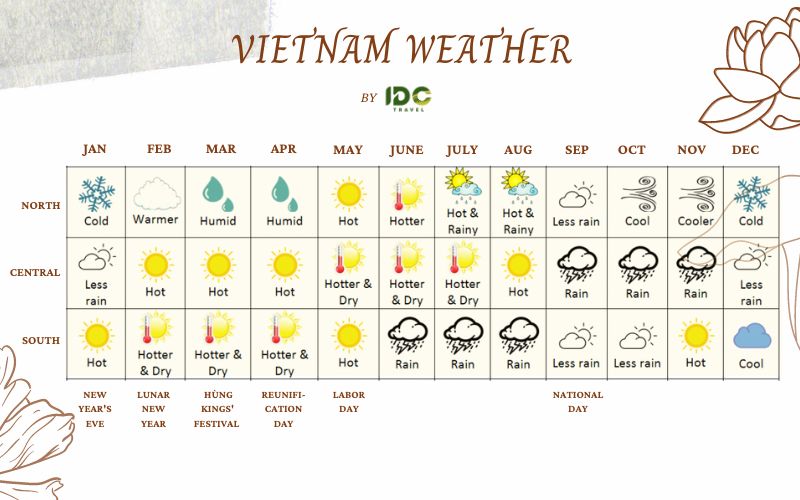
Vietnam Weather
Northern Vietnam
Northern Vietnam, encompassing places like Ninh Binh, Hanoi, Halong Bay, Ha Giang, and Sapa, enjoys a subtropical climate characterized by four distinct seasons: spring, summer, autumn, and winter. The best times to visit are spring (February to April) and autumn (August to October), boasting mild and dry conditions with clear skies and pleasant temperatures. Summer (May to July) brings heat and humidity, along with frequent rain and thunderstorms. Winter (November to January) ushers in cool and dry weather, occasionally accompanied by fog and drizzle. In Hanoi, the average temperature ranges from 17°C (63°F) in January to 29°C (84°F) in June, with an annual rainfall of around 1,680 mm (66 inches).
Central Vietnam
Central Vietnam, covering regions like Quang Binh, Hue, Da Nang, and Hoi An, experiences a tropical climate divided into two primary seasons: dry and rainy. The dry season (January to August) is characterized by hot and sunny weather, occasional afternoon showers, and high temperatures. The rainy season (September to December) brings cooler and wetter conditions, marked by heavy rainfall and the possibility of typhoons. In Da Nang, temperatures range from 22°C (72°F) in January to 30°C (86°F) in July, with an annual rainfall of approximately 2,500 mm (98 inches).
Southern Vietnam
Southern Vietnam, which includes Nha Trang, Ho Chi Minh City, the Mekong Delta, and Phu Quoc, features a tropical climate with two main seasons: wet and dry. The wet season (May to October) is characterized by hot and humid conditions, frequent rain, and thunderstorms. In contrast, the dry season (November to April) offers warm and sunny weather, with occasional late afternoon showers. Ho Chi Minh City, for instance, experiences temperatures ranging from 26°C (79°F) in January to 29°C (84°F) in April, with an annual rainfall of about 1,800 mm (71 inches).
Generally speaking, Vietnam is an all-year-round destination. You can visit this country at any time of the year. The high travel season typically spans from October to April when the weather is at its finest, characterized by dry, cool, and even cold conditions with minimal rainfall. However, the low season, stretching from May to September, remains a favored choice due to the abundance of sunny days. While the rainy spells during the low season may pose some inconvenience to travelers, it’s worth noting the advantages of this period, including excellent deals and enhanced service availability that shouldn’t be overlooked.


